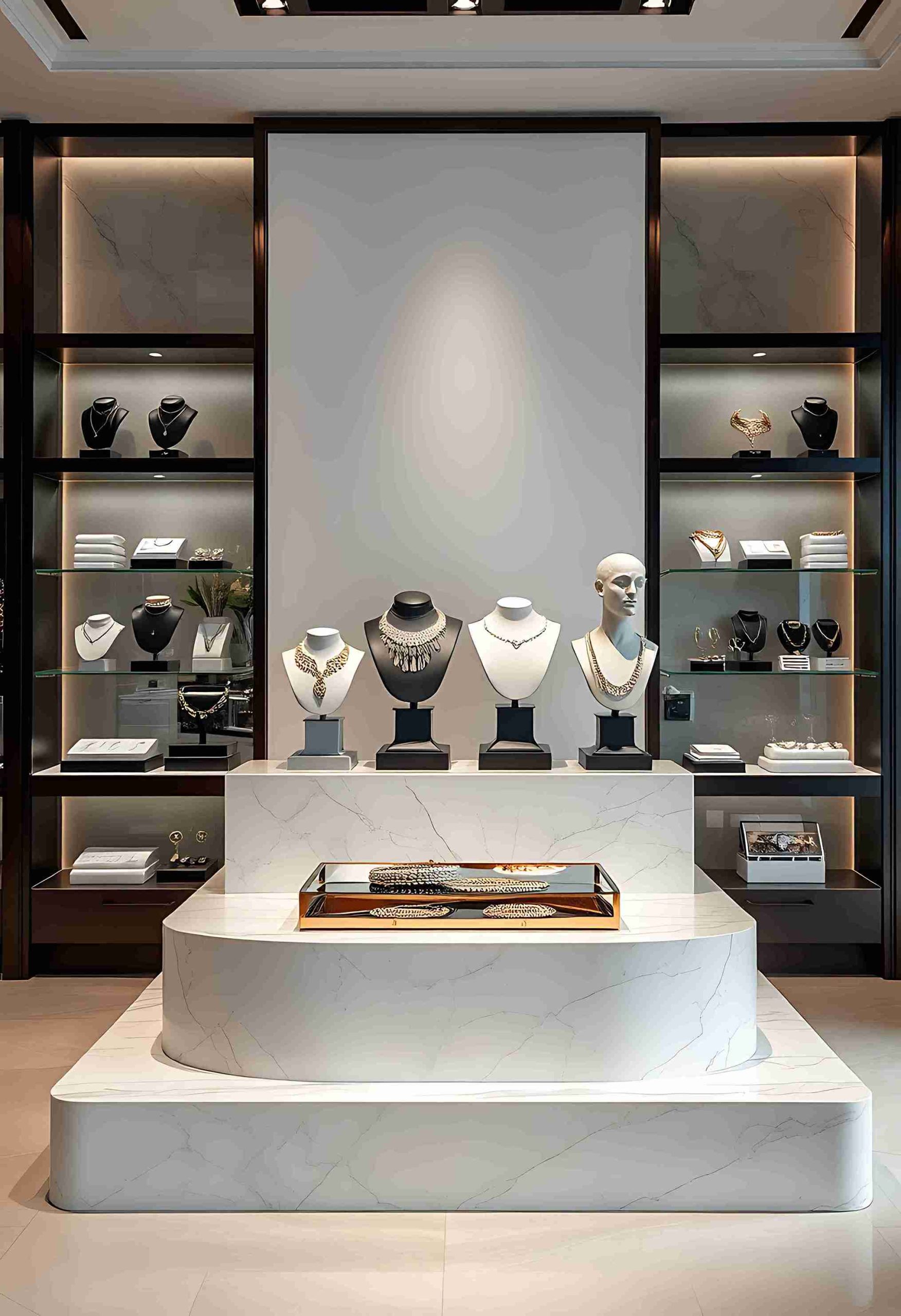In the competitive world of luxury retail, first impressions define the entire customer experience. Every element of a jewelry store must reflect refinement, reliability, and brand identity. From the shimmer of the display cases to the texture of the walls, every surface plays a role in shaping perception.
Among these crucial design elements, melamine wooden doors have emerged as a preferred choice for architects and designers seeking the perfect balance of elegance, durability, and practicality.
In this article, we will discuss how these doors elevate jewelry shop design by blending aesthetics with performance. Without any further delay, let’s begin with our article.
How Do Melamine Wooden Doors Enhance Luxury and Elegance in Jewelry Shop Design?
A jewelry store’s visual impact depends on harmony between architecture and material selection. Every design choice must complement the sophistication of the jewelry on display. melamine wooden doors are ideal for this purpose, as they embody a modern, polished finish that aligns perfectly with contemporary jewelry shop design.
Their smooth surface, fine texture, and rich color options allow designers to create entrances and interiors that radiate sophistication. Unlike ordinary wooden doors, melamine finishes resist scratches, stains, and fading, preserving their luster even in high-traffic environments.
The appeal of these doors lies not only in their appearance but also in their ability to adapt to different design concepts. Whether a jewelry store follows a minimalist layout with bright lighting and clean lines or a classic aesthetic with warm tones and golden accents, melamine wooden doors fit effortlessly.
They can be customized in various patterns, gloss levels, and grain effects, ensuring that each space achieves its unique visual identity. For luxury retail interiors where every detail counts, melamine doors deliver both prestige and practicality in equal measure.
Why Are Melamine Wooden Doors Structurally Reliable and Long-Lasting?
While aesthetics draw attention, strength ensures continuity. Jewelry stores require materials that can endure daily wear while maintaining a flawless appearance. Melamine wooden doors provide this durability through their robust construction and engineered layers. They are made using a core of high-density wood material bonded with melamine resin under heat and pressure, creating a surface that is resistant to moisture, scratches, and impact.
This makes them particularly suitable for high-traffic retail environments, where longevity and visual stability are critical.
In jewelry shop design, durability extends beyond walls and showcases. Doors are among the most frequently used elements in the space, often exposed to constant handling by customers and staff. Melamine doors can withstand these conditions without warping, chipping, or losing their finish.
Their smooth, non-porous surface also makes them easy to clean, ensuring that hygiene standards remain high—a key consideration for luxury spaces that must always look impeccable.

How Do Melamine Wooden Doors Contribute to Sustainable and Cost-Efficient Jewelry Shop Design?
Sustainability and resource efficiency are central themes in modern architecture, and melamine wooden doors align perfectly with these principles. They are manufactured using engineered wood products, which reduce the need for solid timber and minimize environmental impact. By utilizing composite cores and recycled wood fibers, manufacturers can produce high-quality doors while conserving natural resources.
This makes them a sustainable choice for environmentally conscious jewelry brands that aim to balance luxury with responsibility.
Beyond sustainability, melamine doors also offer economic advantages. Their long lifespan reduces the need for frequent replacements, which helps lower maintenance costs over time. The ease of installation and cleaning further contributes to operational efficiency, allowing jewelry store owners to maintain premium aesthetics without excessive upkeep. Energy efficiency is another benefit, as these doors can be integrated into temperature-controlled spaces to help retain ambient comfort.
By choosing melamine wooden doors, designers not only create a luxurious ambiance but also invest in a sustainable and cost-effective design solution that supports long-term performance and brand reputation.
How Do Melamine Wooden Doors Improve Functionality and Design Flexibility?
Every jewelry store requires a design that flows effortlessly from the entrance to the display area, creating a seamless shopping experience. Melamine wooden doors support this functionality through their adaptability and design versatility. Available in sliding, hinged, and folding formats, they cater to a variety of layout requirements.
For compact jewelry boutiques, sliding melamine doors save valuable space while maintaining an elegant appearance. In larger stores, grand hinged doors made with melamine panels add a touch of sophistication to the entryway, inviting customers into a world of brilliance and luxury.
Functionality also extends to acoustic and privacy considerations. Jewelry stores often include consultation rooms where clients discuss high-value purchases. Melamine doors provide effective sound insulation, ensuring these conversations remain private. Their solid structure also contributes to temperature regulation, maintaining a comfortable indoor environment for both staff and visitors.
Why Are Melamine Wooden Doors the Future of Modern Retail Interiors?
As the retail industry continues to evolve, the role of material innovation becomes increasingly important. Luxury brands are now focusing on creating immersive spaces that tell a story through design. In this transformation, melamine wooden doors stand out as a material that perfectly balances form and function.
They offer a refined aesthetic appeal, structural integrity, environmental responsibility, and cost efficiency—qualities that every modern jewelry shop design demands. Their ability to integrate seamlessly with other materials such as glass, marble, and metal makes them a versatile solution for creating visually stunning environments.
Conclusion:
The integration of melamine wooden doors into jewelry shop design represents more than a design choice; it signifies a commitment to quality, functionality, and sophistication. These doors transform spaces by offering a blend of aesthetic appeal, structural strength, and environmental responsibility. They allow jewelry brands to craft interiors that not only highlight their products but also reflect their values.
As the demand for durable, elegant, and sustainable materials grows, melamine doors will remain at the forefront of modern retail design. They are more than just architectural elements—they are statements of excellence that define the experience of luxury itself.


